The skinny on Chile
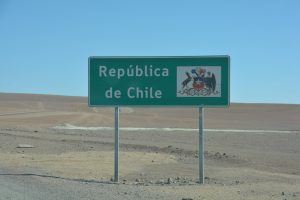
The northern third of Chile, where we entered from Bolivia, features almost exclusively the vast Atacama Desert
Chile is one of the oddest shaped countries in the world. It dominates the western shore of South America, never more than a few hundred miles in width. The Andes mountains run down its eastern border with Argentina and its southern section features so many fjords, lakes and mountains it is largely roadless. The primary feature of northern Chile is the Atacama Desert, said to be the driest in the world. We entered Chile from Bolivia at the remote town of San Pedro and headed west and then south across this famous desert, trying to comprehend the lifeless enormity of what we were seeing hour after hour.

Our first look of Chile was still at the high altitudes of the Andes and featured a string of snow-capped volcanoes
We have come to learn that deserts take many forms but most usually they have some sort of vegetation, even if only a few scrubby bushes or brown grasses. But not the Atacama, this is desert scenery in the extreme, mile after mile of brown rocky nothingness, in a beautiful sort of way. The desert challenged our concept of distances, horizons and colour – there was not any sign of life.
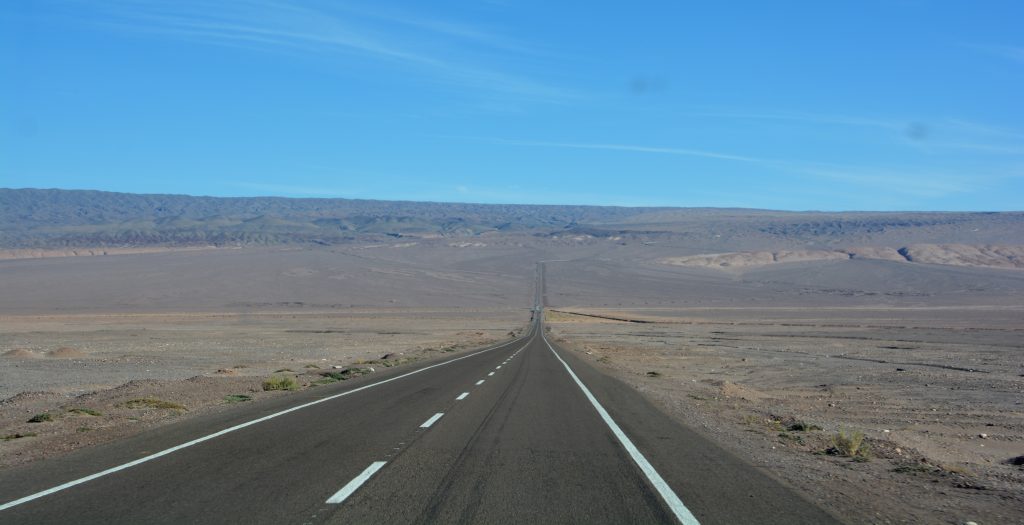
We immediately enjoyed the great roads in Chile compared to Bolivia as well as the expansiveness of the desert
We pulled into the large coastal city of Antofagasta, a city with an awful name but it was nice to be back at sea level and see the waves of the Pacific Ocean break on the rocks and beaches of this northern regional centre. Antofagasta was a surprisingly lovely city, very clean and modern, a fabulous malecon, or waterfront promenade, all the trappings of back home. We stopped in a huge shopping centre which wouldn’t have been out of place in Australia or the US and stocked up on much needed supplies. Antofagasta, except for the name, got our big thumbs up.
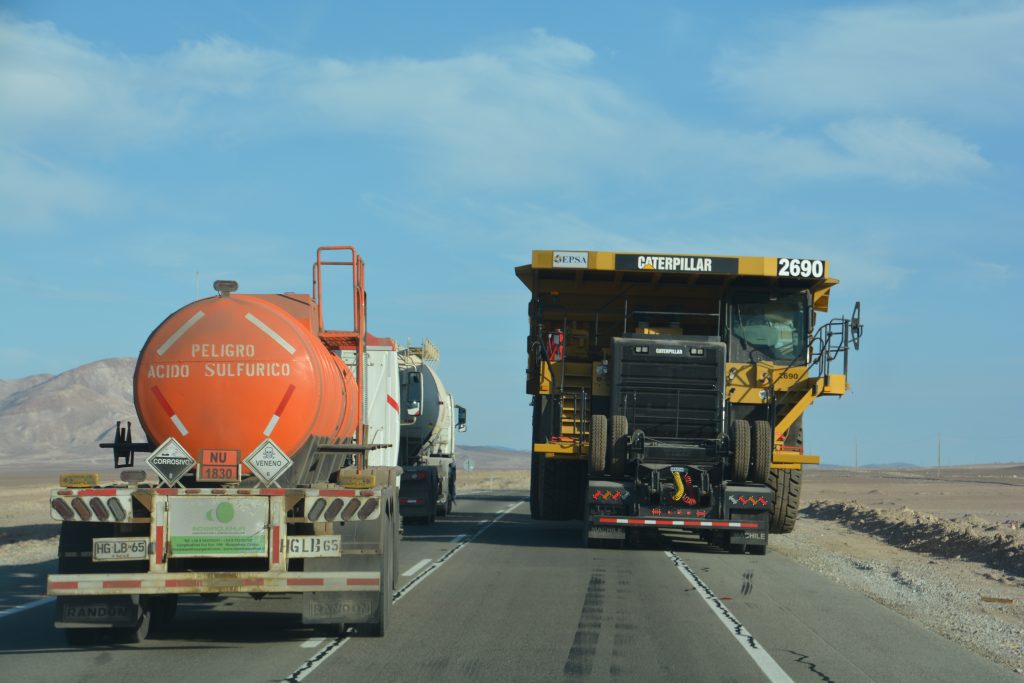
The enormous distances of Chile causes some serious transport issues but they all seemed to be solved on the singular highway that runs through the centre of the country, including some huge trucks
But further south through the desert we travelled, putting good distance between camp sites in our quest to get south before the weather turned too cold and to stay on our tight schedule. We camped the next night in an old forgotten quarry with a forest of nearby wind turbines our only friends. It seemed as if the Atacama had swallowed us into its endless desert.
Chile is about 4,200 kilometres (2,500 miles) long from tip to tail, about the same as San Francisco to New York or Sydney to Perth. The roads are very good in the northern and central parts of the country but in the south the lakes, bays, waterways and ocean channels hinder any sort of easy travel by road. But that was all ahead of us. For now we had to make tracks in a southerly direction.
And so we did. For the second day running we headed south across the Atacama Desert, good roads ahead of us and endless brown desert in all directions. On a whim we veered west to the coast and drove through the Pan de Azucar (Sugar Bread) National Park which features amazing desert colours and landforms, unique animals and outstanding beaches – perhaps the best we’ve seen in South America.
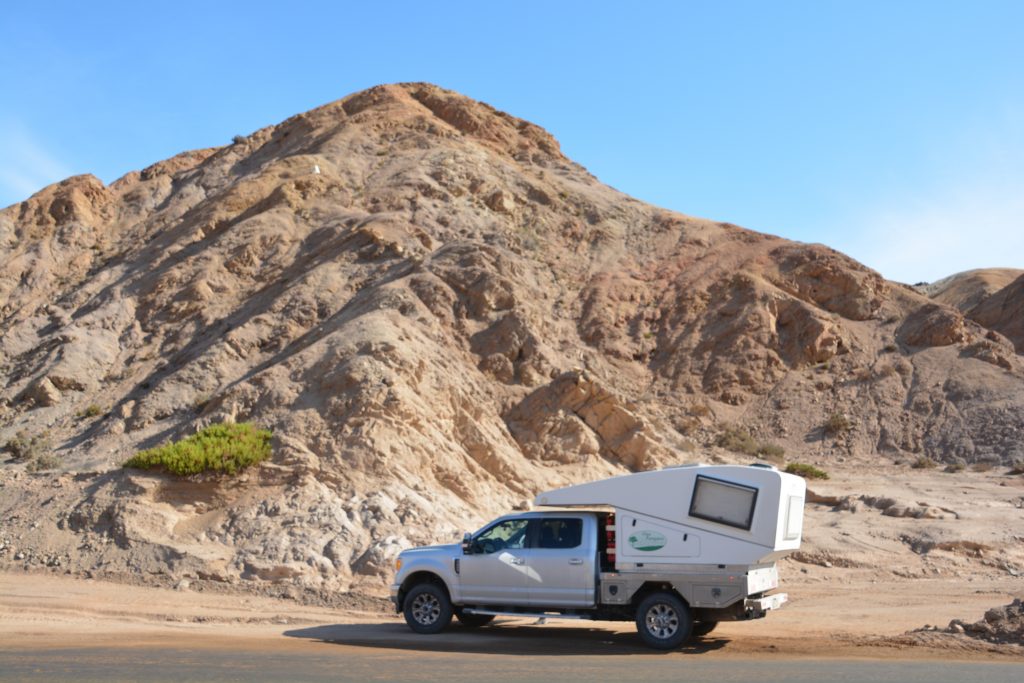
We followed this side track into the Pan de Azucar National Park and came across this green bush – incredible! We had to stop for a photo of such a momentous event.
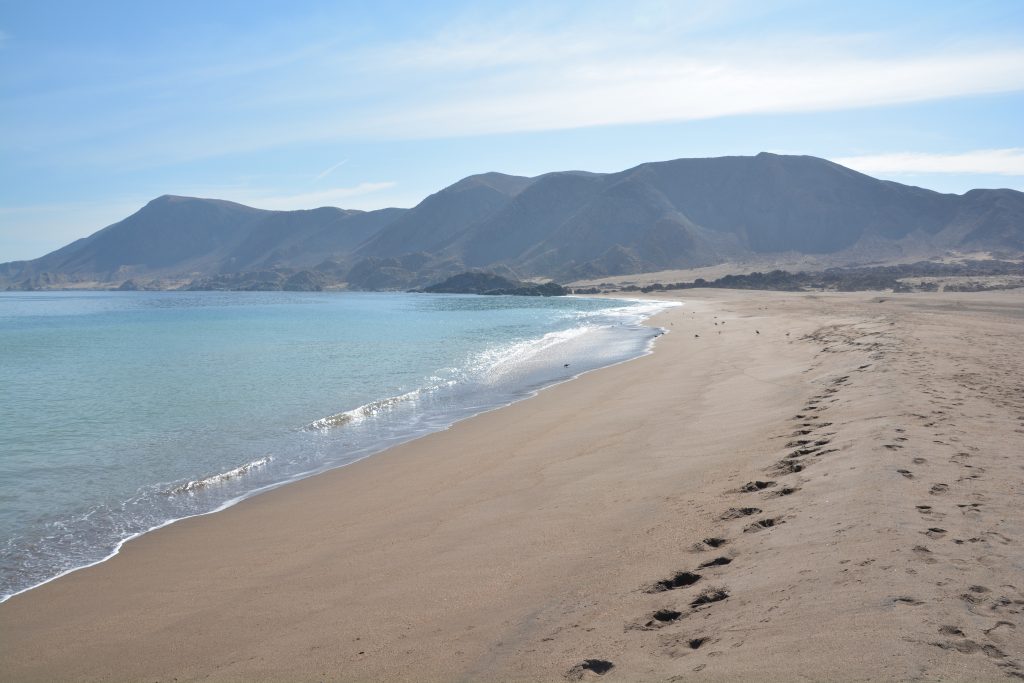
The national park featured some fantastic beaches with almost no infrastructure at all, just endless sand and desert mountains
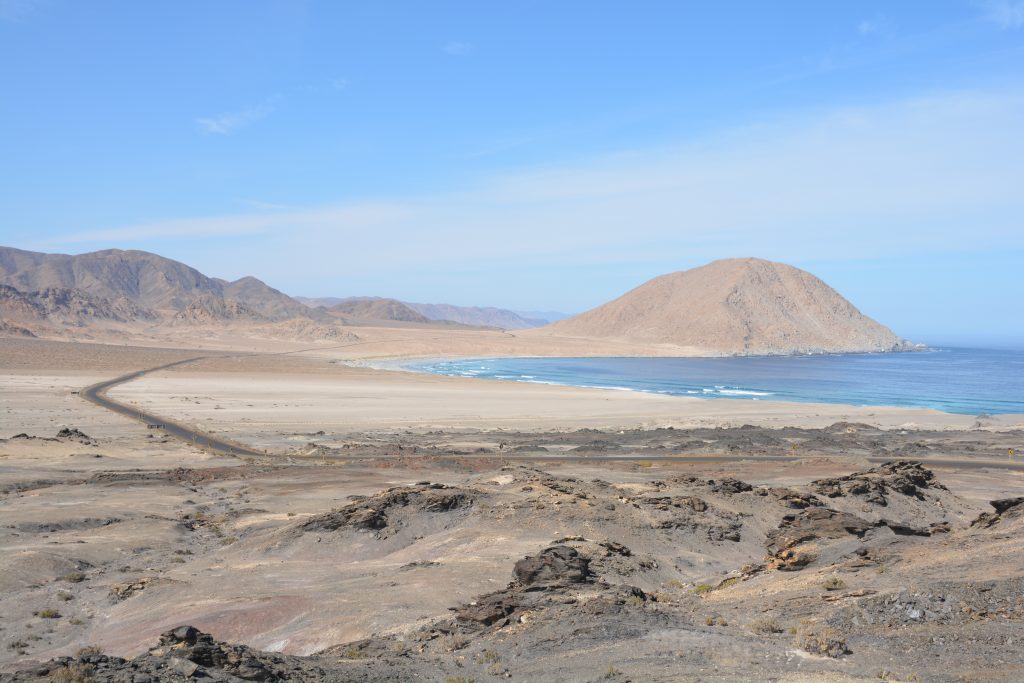
We would have loved to camp on this beach but it was still morning and we reluctantly had to move on
The road eventually veered inland and we made good time on the four lane divided highway. South of Copiapo the desert started showing signs of life, some bushes, a little green, even a few dry river beds. We camped that night in the middle of the desert, stars blanketing us following the orange sunset, even collected enough scrubby wood to have a small fire. As the locals would say, muy tranquillo.
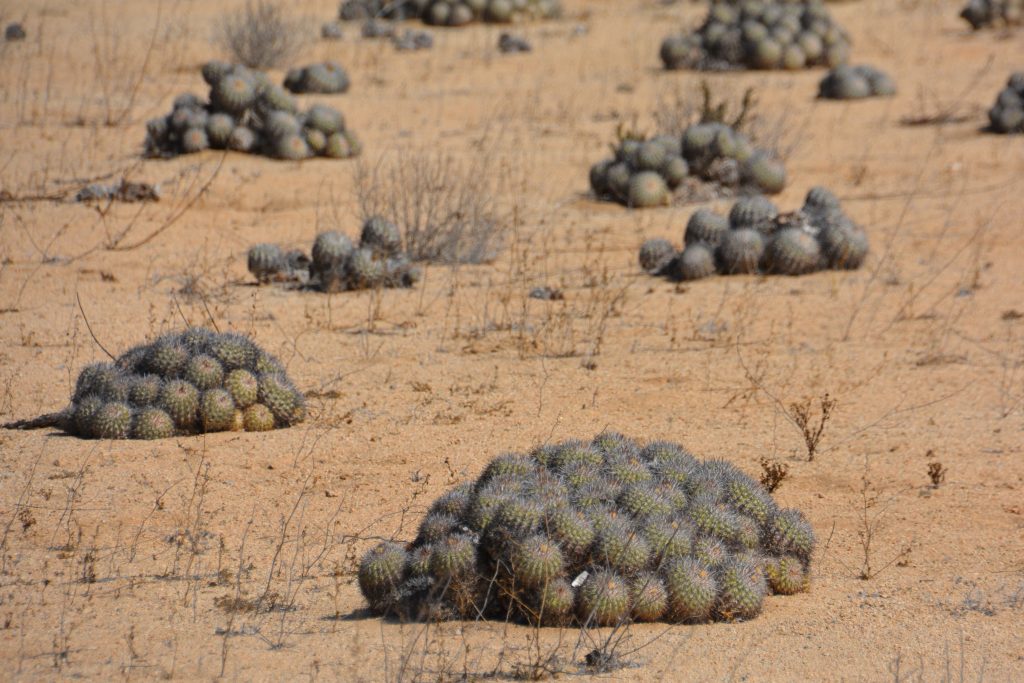
Very strange little cactus balls scattered across a small area, like droppings from a prolific desert monster
What northern Chile lacks in variety it makes up for in quantity. The desert is an unrelenting feature of these parts and it seems no matter how far you drive it is always there. We stopped in the large town of La Serena, an attractive town on a sheltered bay with deep white beaches, for important admin duties Laundry!! Haircuts!! Wifi!!) before spending the afternoon heading further south, ever closer to the capital of Santiago, still more scruffy desert all around. We crossed no major rivers, no green belts, very little sign of life.
And Chile has a way of pounding it into you without any towns, no petrol stations and almost no rest areas with toilets. If you want to drive the length of their country they expect you to fill up, cross your legs and drive.
But occasionally the omnipresent gum tree pops up on the side of the road and on one occasion Julie and I stopped to collect a bit of forlorn firewood. Good forward planning because that night we camped amongst a grove of gums and enjoyed another welcoming and warming fire – just like it should be.
But man, this country is long. We were doing our best to get down to the southern region of Chile and southern Argentina before winter sets in but despite the great roads we still had a long way to go. We ducked into the historic port city of Valparaiso with its beautiful protected harbour, colourful buildings stretching up the steep mountains and hundred year old funiculars giving locals and visitors easier access to the upper suburbs. And we finally found a gas cap to replace the one that I left behind at a station a couple of weeks ago. Phew!
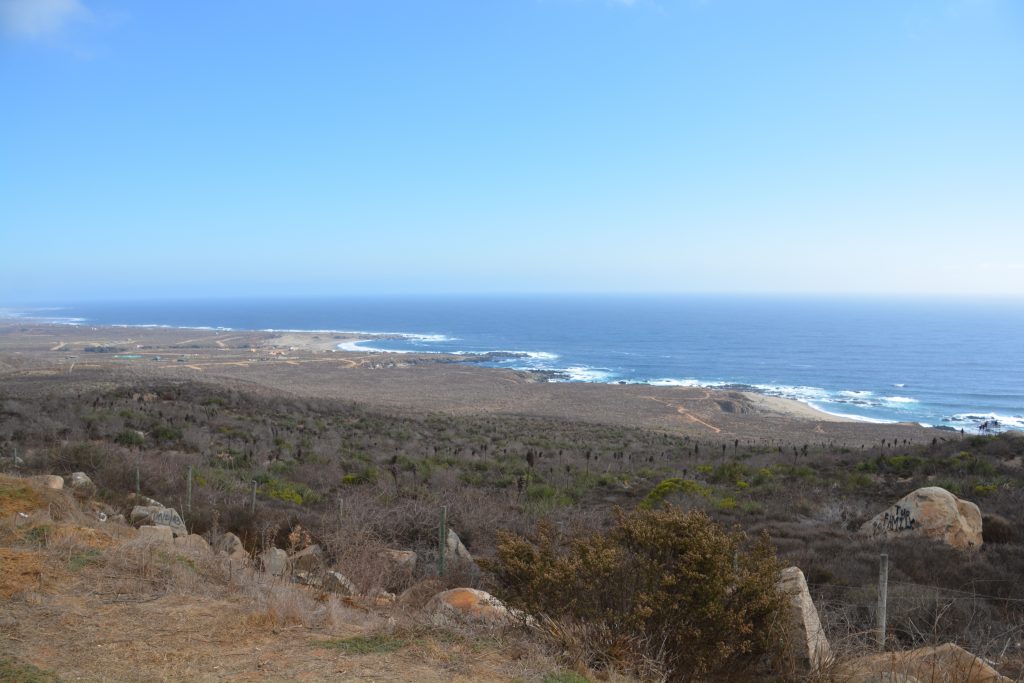
As we travelled south more plants and greenery started to appear but the coastline continued to deliver some awesome views
Travelling through the heart of Chile south of the capital Santiago where the landscape started to become greener we were struck by how normal this looked and similar to the US or Australia. A busy divided highway, modern cars and buses, businesses buzzing on both sides of the road, billboards, powerlines, crops, vineyards, people going about their business. No noticeable rubbish, none of the abject poverty we had seen elsewhere, no beasts of burden, all quite modern and normal.
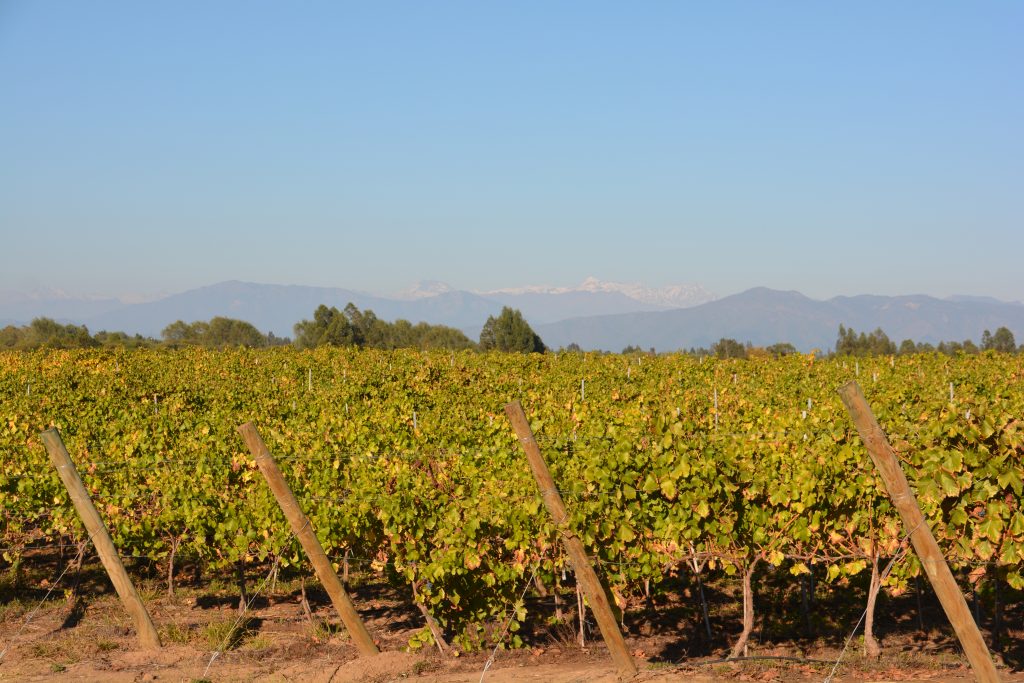
We’ve always enjoyed Chilean wines and we headed south we drove through some of their large healthy vineyards
Except the road tolls. We’ve seen road tolls in most countries and the most expensive was Mexico. Colombia was ridiculous because we would spent $25 per day on atrocious roads, Ecuador had great roads and when a rare toll booth came up it was always for $1. Chile has great roads but the only north-south highway has huge tolls, usually about $5 per stop and sometimes up to eight toll booths per day. Our new Spanish curse word is peaje, or toll.
The next morning brought bad news of the worst kind. The lid of Tramp’s camper would not go down all the way and despite a couple hours of fiddling, cajoling, pleading, hammering and swearing it simply would not move from its halfway point. We were in deep schtuk.
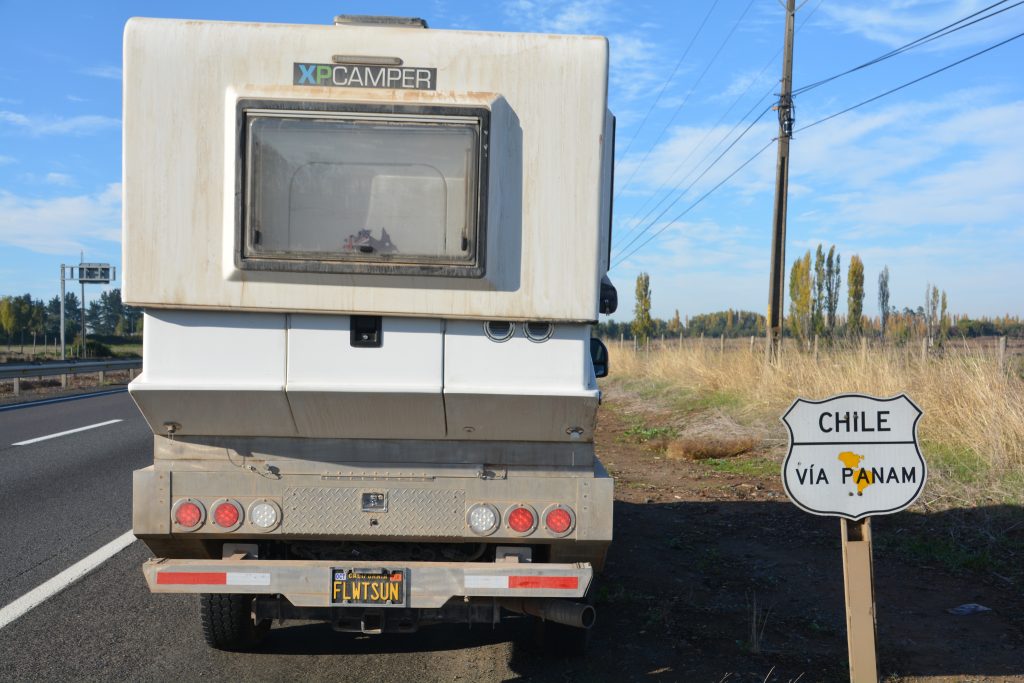
Tramp poses next to a rare sign that highlights the Chilean section of the Pan American highway – note the top of the camper is stuck in a halfway position and slightly crooked
The origins of this problem go back about ten days when we had to start using the manual override system to raise and lower Tramp’s lid because the hydraulic system was not operating properly. But now the lid had stopped moving all together and the camper was completely unusable. It was a sickening feeling to think that our grand trip was now somehow in deep peril because of what could be a problem on the motor of the hydraulic system.
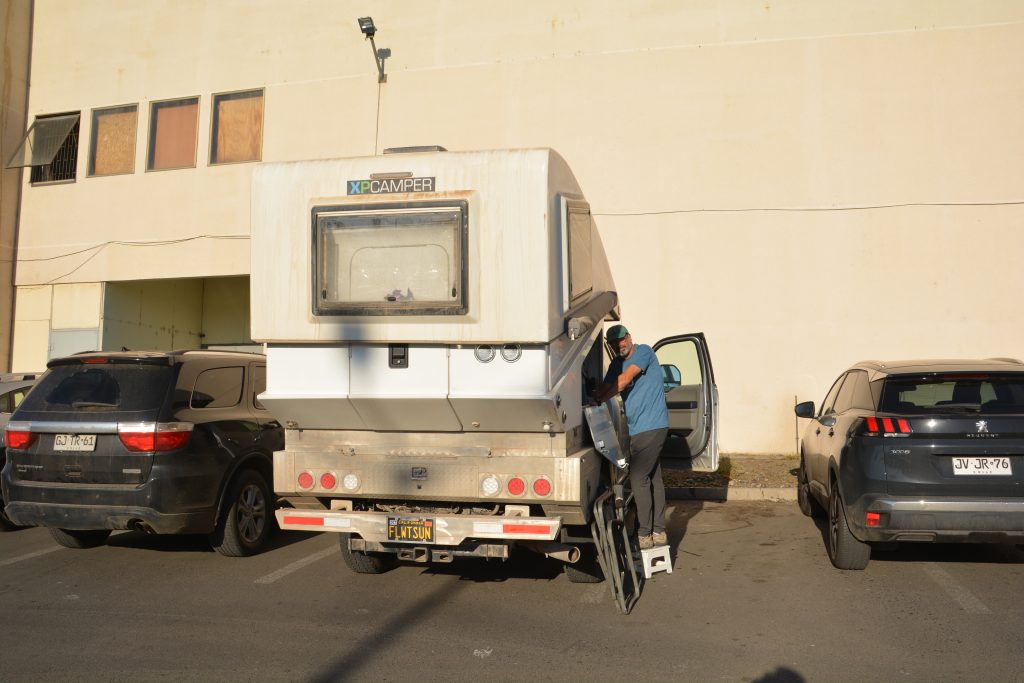
Not a good look – we spent most of the day in a shopping centre carpark trying to fix our hydraulic motor
We drove into the nearby town of Talca and spent the rest of the day – a very long day – in a shopping centre carpark talking to the camper guys in California and trying to work out what went wrong and how to fix it. The painful horrible bottom line was that it appeared the motor on the hydraulic system had failed and needed to be replaced. From deepest Chile this is practically impossible. By dark Julie and I were a spent force but we limped to the nearest hostel and drowned our sorrows in pizza and beer.
After a night of working through all the different problems, ideas, scenarios, costs and logistical issues we knew we needed to fix the hydraulic system of the camper – probably by having a new motor FedExed to us – while we kept to our schedule as much as possible and meet our date to ship Tramp from Montevideo Uruguay to Antwerp Belgium. This meant in the short term possibly staying in hostels and other hard top accommodations before getting the camper fixed. Not good!
With Tramp’s lid halfway down we spent the next day doing our longest drive of the entire Follow the Sun adventure, straight down Chile’s beautiful divided Highway 5, the Pan American Highway, paying their outrageous tolls along the way, through ever-increasing green and fertile lands, many different crops, planted forests of gum and pine, clear rivers, high snow-capped mountains to our east. It was a pleasant and enjoyable drive and we arrived in the southern Chilean town of Osorno by dusk. We stayed in another local hostel, gritted our teeth through the hassle of finding secure parking and having to cope within the confines of a small room, before moving on the next day.
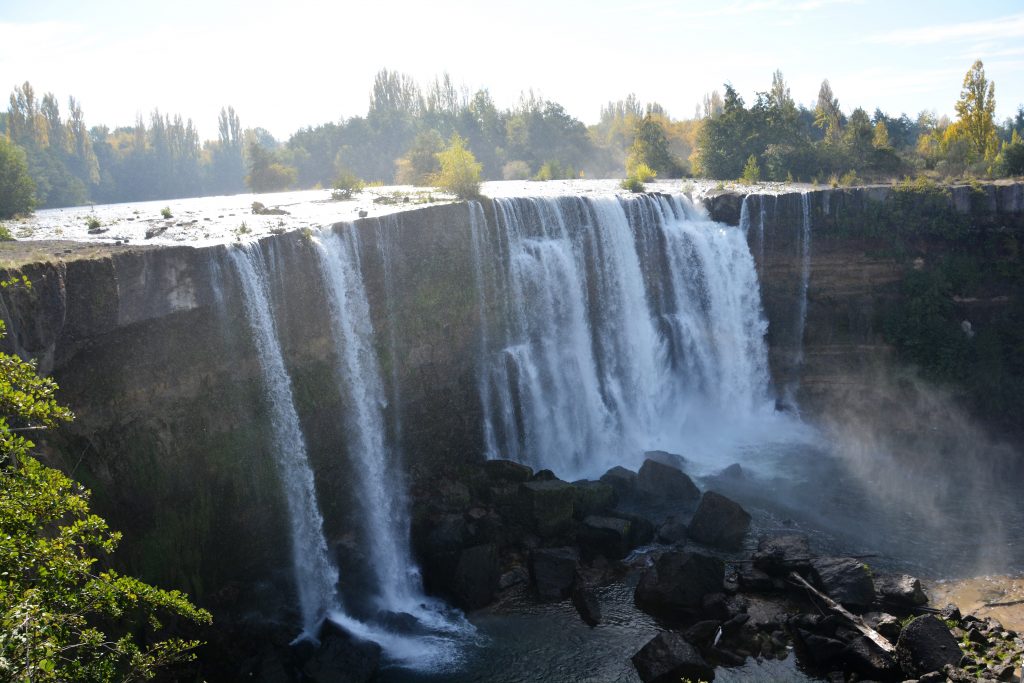
These spectacular waterfalls were just a few kilometres off the main highway and provided a nice break to a long drive
By visiting a hardware store and applying drills, saws and hammers we managed to get the top of Tramp’s camper to move up and down, albeit manually. So while we were in long distance dialogue with the camper guys in California on how best to provide a permanent fix to our problem at least now we could use the camper and we knew the show must go on.
One of our plans, and we have had many, was to drive south of Puerto Montt onto the island of Chiloe and catch a ferry through the Chilean fjords further south. But in low season the ferry we needed inconveniently only ran twice a week and with our tight time frame and our problems with Tramp we did not want to have any delays or take any chances.
So from Puerto Montt we turned east through part of the lovely lakes district of southern Chile and headed for the Argentinean border. Or at least we imagined it was lovely – the fog was low and the rain was horizontal for most of the morning. We could only guess at the views before us, the snow-capped volcanoes, the glistening lakes, the green rolling hills.
We passed through Puyehue National Park with its long range of invisible volcanoes and deciduous trees turning shades of yellow and orange before negotiating the Chilean – Argentinean border and driving through the Nahuel Huapi National Park. The pass between countries was only about 1,000 metres but there were patches of snow on the ground, miserable cold rain and a serious gloom in the air. We reminisced about all those 4,000 metre passes in Peru and Bolivia without a snowflake in sight.
Nahuel Huapi is a beautiful park, the most popular in all of Argentina and rightly so. As the sun began to peak through the clouds we could see why – skyhigh mountains bordering deep blue lakes, bright fall colours everywhere, snow not too far away. We drove into the popular Argentinean resort town of Bariloche on the banks of the Nahuel Huapi Lake and the scene reminded us of beautiful Lake Tahoe in California’s high Sierra Nevada mountains. High praise indeed. We camped that night at a nearby campsite, happy to be back in Tramp, even in his damaged state.
Our first visit to the geographically diverse, modern and amazing country of Chile was now over but we planned to re-enter it further south and explore more of its treasures. Until then it would be the Argentinean outback!
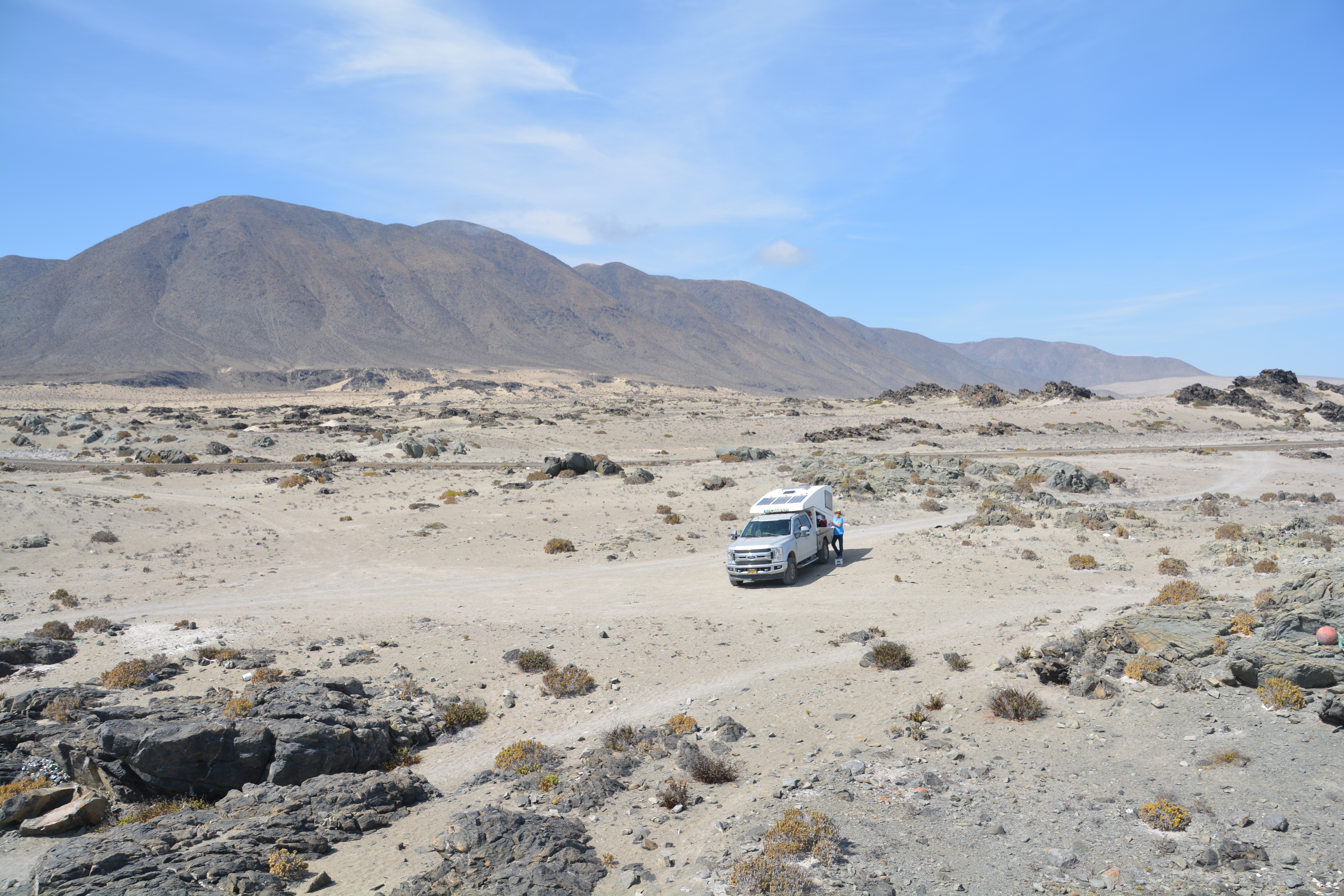

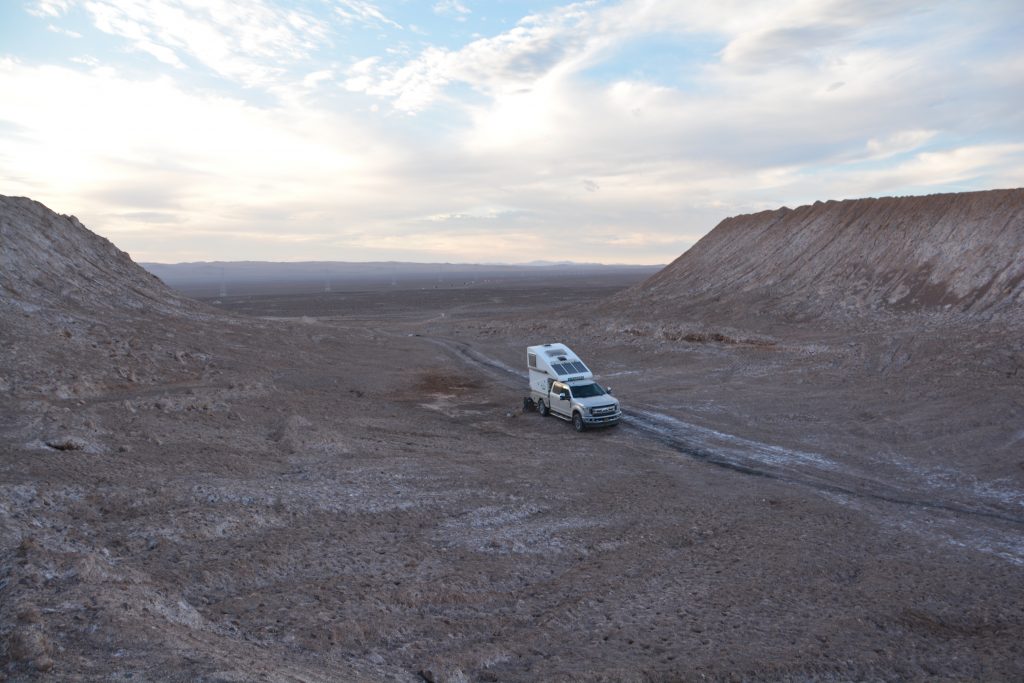




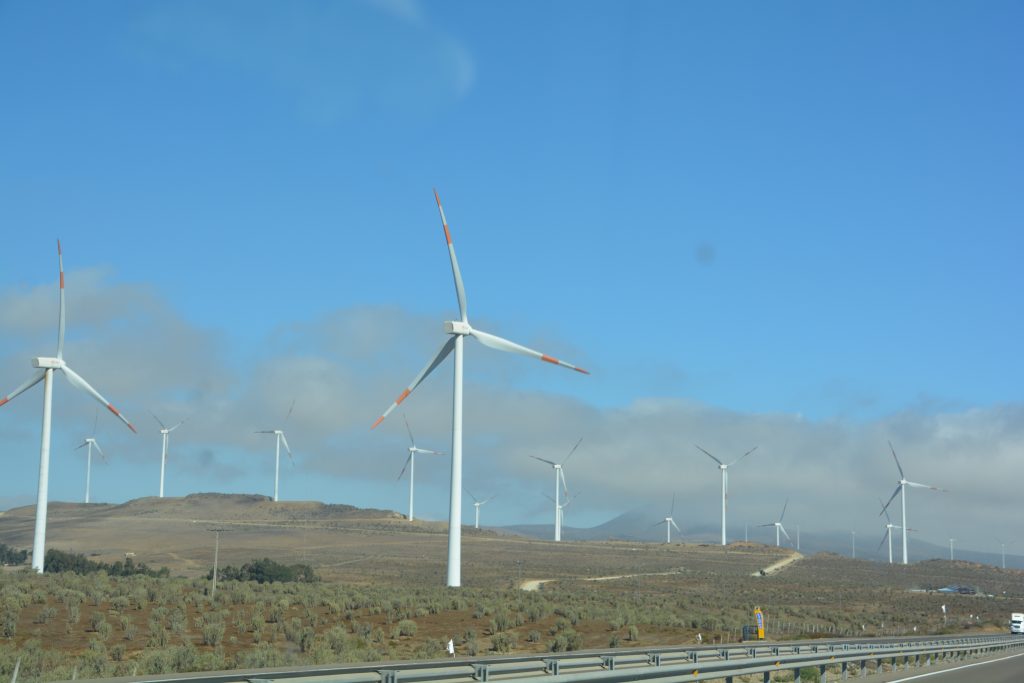




Comments
The skinny on Chile — No Comments
HTML tags allowed in your comment: <a href="" title=""> <abbr title=""> <acronym title=""> <b> <blockquote cite=""> <cite> <code> <del datetime=""> <em> <i> <q cite=""> <s> <strike> <strong>